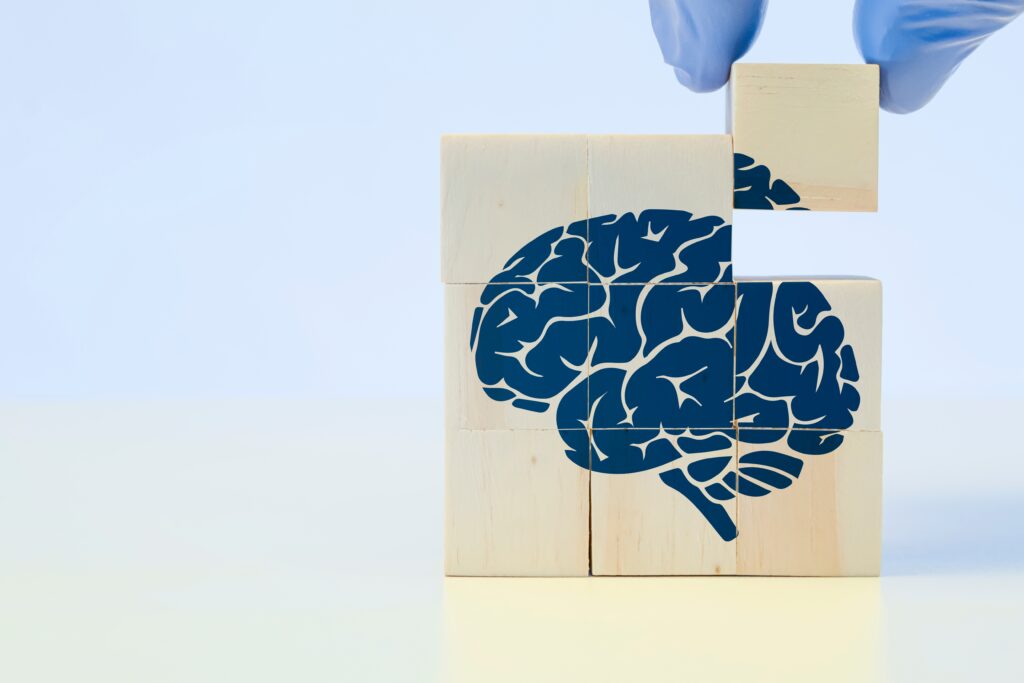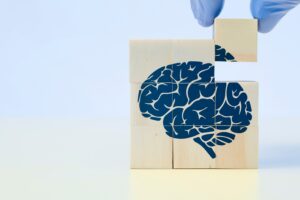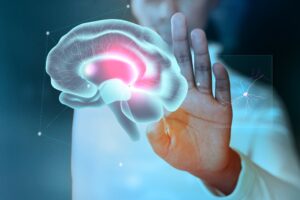
Alzheimer’s May Progress in Two Phases, Transforming Understanding of Brain Damage
Alzheimer’s disease may not follow a straightforward progression. A recent study discussed in Medical Xpress has shown that this devastating disease can affect the brain in two distinct stages, each affecting certain types of brain cells differently. Conducted by leading scientists at the Allen Institute, this groundbreaking study could redefine the timeline of brain changes in Alzheimer’s, offering new hope for targeted treatments and early detection.

Alzheimer’s Disease and Brain Damage: Study Overview
Alzheimer’s disease is known for its gradual deterioration of memory and cognitive function, affecting millions globally. Despite intensive research, understanding the exact timing and nature of brain damage in Alzheimer’s has proven difficult, making early diagnosis and treatment challenging. Traditionally, Alzheimer’s has been believed to cause continuous damage over time, marked by the gradual buildup of plaques and tangles in the brain.
The study was led by neuroscientists Dr. Mariano I. Gabitto and Dr. Kyle J. Travaglini from the Allen Institute in Seattle, with support from the National Institutes of Health’s (NIH) Brain Research Through Advancing Innovative Neurotechnologies (BRAIN) Initiative. The findings were published in the peer-reviewed journal Nature Neuroscience, marking a significant contribution to Alzheimer’s research.
How the Study Was Conducted
To uncover these insights, scientists analyzed the brains of 84 deceased individuals who had Alzheimer’s, drawing on the Seattle Alzheimer’s Disease Brain Cell Atlas (SEA-AD), which provides a highly detailed map of brain changes linked to Alzheimer’s. Using innovative tools developed through the NIH’s BRAIN Initiative, the researchers examined over 3.4 million individual brain cells to create a cellular timeline of Alzheimer’s progression.
Methods and Technologies
The researchers focused on a brain region called the middle temporal gyrus, which plays a crucial role in memory, language, and vision. This region is particularly vulnerable to Alzheimer’s-related changes, making it ideal for tracking the disease’s impact. Advanced genetic analysis techniques were employed to detect subtle cellular alterations and reveal a two-phase progression of the disease.
Breaking New Ground: Innovations of This Study
This study stands out from prior Alzheimer’s research by introducing the concept of Alzheimer’s progressing in two main “epochs” or phases, rather than a single, continuous timeline. Here’s what makes this approach unique:
- Focus on Early and Late Damage: Earlier studies largely emphasized later-stage brain damage associated with cognitive symptoms. This study revealed that the initial, silent phase of the disease occurs long before symptoms appear, affecting only certain vulnerable cells.
- Identifying New Cell Targets: Previous research primarily highlighted excitatory neurons (cells that stimulate other cells). In contrast, this study found that inhibitory neurons, which help to regulate brain activity, are significantly impacted early in the disease, hinting at a new mechanism of Alzheimer’s progression.
- Utilizing a Cellular Census: By using the SEA-AD resource, the scientists were able to analyze individual cell types at different disease stages, enabling an unprecedented level of detail in understanding the cellular progression of Alzheimer’s.
- Genetic Insights from Comparative Mapping: By comparing Alzheimer’s-affected brains with healthy donor brains, the researchers identified new genetic vulnerabilities that could shed light on the underlying mechanisms of Alzheimer’s and lead to innovative treatment options.
Key Findings of the Study
The researchers made several crucial discoveries, which are detailed below:
- Two-Phase Progression of Alzheimer’s: The study found that Alzheimer’s damages the brain in two primary stages. The first phase is slow and subtle, affecting only a few types of cells without causing symptoms. The second phase involves a rapid increase in damage across many brain regions and aligns with the appearance of memory loss and cognitive symptoms.
- Early Cell Damage in Inhibitory Neurons: The research showed that the earliest brain changes occur in specific cells called somatostatin (SST) inhibitory neurons, which help balance brain activity. This damage could disrupt communication between brain cells and potentially trigger Alzheimer’s progression.
- Gradual Accumulation of Plaques: The early phase of Alzheimer’s involves a slow accumulation of amyloid plaques, long before they become visible on brain scans. This silent buildup may go unnoticed until it reaches a tipping point, leading to accelerated brain damage.
- Immune System Activation: Contrary to previous beliefs, the study found that the brain’s immune system, including astrocytes (supportive brain cells), is activated early in Alzheimer’s, which may play a role in protecting certain areas of the brain from damage.
- Identification of Genetic Factors: The study highlighted that genes such as REELIN could influence certain neurons’ susceptibility to Alzheimer’s, suggesting new areas for genetic therapy and targeted intervention.
Broader Implications for Science, Medicine, and Society
- Advancing Alzheimer’s Research: This study reshapes scientists’ understanding of Alzheimer’s, which could catalyze new approaches to early diagnosis and treatments. By pinpointing the types of cells and brain processes affected in the disease’s initial phases, researchers now have a clearer roadmap for tracking Alzheimer’s progression, making early intervention more feasible.
- Significance for Medical Treatment: One of the main challenges of treating Alzheimer’s is that brain damage often goes undetected until symptoms arise. This study’s findings may pave the way for new diagnostic tools and therapies that specifically target the early-phase damage, potentially halting or slowing the disease before symptoms become severe. The identification of inhibitory neuron loss could lead to therapies aimed at preserving these cells, offering new hope for those at risk.
- Potential Educational and Social Benefits: With greater awareness of the silent phase of Alzheimer’s, educational programs can focus on early lifestyle and health interventions that may help delay cognitive decline. Additionally, the study’s focus on genetic factors opens doors for personalized medicine, where treatments could be tailored based on individual genetic profiles.
- Future Research Directions: This research lays the groundwork for further studies on the genetic and cellular markers of Alzheimer’s. By continuing to map the brain at a cellular level, scientists may be able to identify the molecular triggers that differentiate Alzheimer’s from other forms of dementia, enhancing the precision of future treatments.
Conclusion
This study marks a transformative moment in Alzheimer’s research, introducing a two-phase model that challenges the traditional understanding of the disease’s progression. The early identification of brain changes, particularly in inhibitory neurons, may hold the key to effective early interventions. As scientists continue to explore these findings, society can look forward to potential advancements in Alzheimer’s diagnosis, treatment, and prevention, offering hope to millions affected by this devastating condition.
One promising approach for slowing cognitive decline involves regular brain training, which may be an additional tool to help slow the progression of diseases such as Alzheimer’s. Activities that challenge the brain—such as solving puzzles, learning new information, or engaging in complex mental tasks—can support the maintenance of neural connections and even stimulate the growth of new brain cells. This mental exercise strengthens cognitive reserves, enabling the brain to cope more effectively with early-stage damage. Additionally, an active lifestyle and maintaining social connections have been shown to benefit brain health. Combining these methods with early diagnosis and targeted treatments, informed by new studies such as the two-phase model of Alzheimer’s, could provide a comprehensive strategy for slowing cognitive decline.














